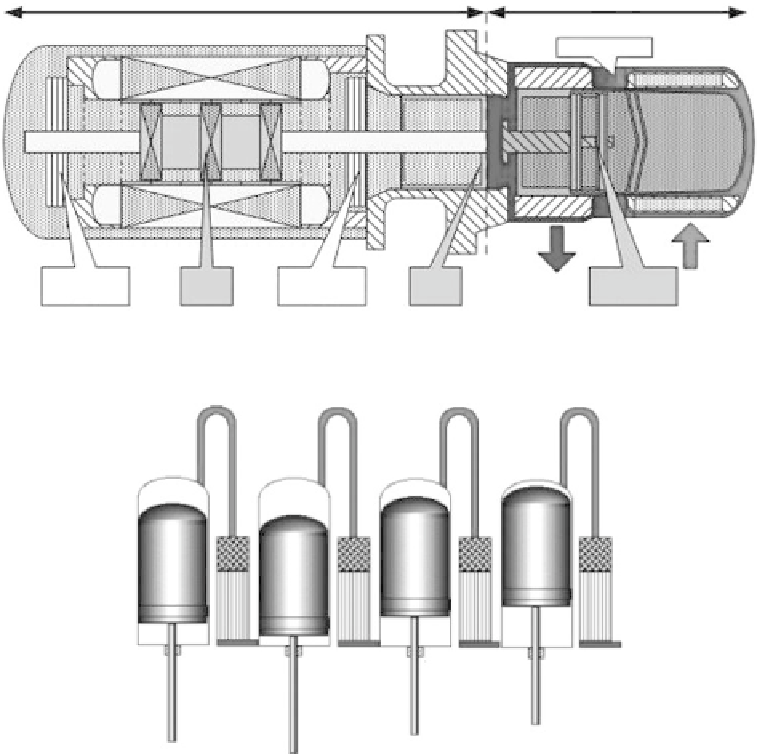Environmental Engineering Reference
In-Depth Information
Linear alternator
Stirling engine
Regenerator
Rear flexure
stack
Front flexure
stack
Mover
Piston
Displacer
Figure 14.5.8
Schematic representation of a Beta free-piston Stirling generator.
Figure 14.5.9
Double-effect Alpha configuration.
inertial effects due to the presence of three or four pistons, respectively phase-shifted
by 120
◦
or 90
◦
, which improve mechanical efficiency since the dual action works the
crank in one direction while compression is directly subtracted from expansion.
14.5.5 Stirling working fluids
The working fluid in a Stirling engine
is employed in a closed cycle and has to sat-
isfy the following requirements: (i) good heat transfer coefficients; (ii) low viscosity;
(iii) high thermal stability; and possibly (iv) low cost (Urieli and Berchowitz, 1984).
Light molecule fluids like H
2
or He are considered suitable fluids for solar dish
Stirling applications because they meet the majority of these requirements; however, a
small caveat concerns leakages. In fact, due to the small size of their molecules, these
fluids tend to escape through seals. The problem is more serious for H
2
because of

Search WWH ::

Custom Search